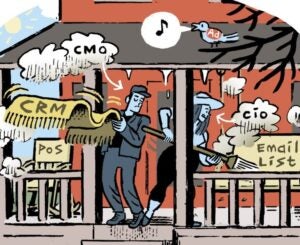 “The Sell Sider” is a column written by the sell side of the digital media community.
“The Sell Sider” is a column written by the sell side of the digital media community.
Today’s column is written by James Curran, founder and chief product officer at STAQ.
Publishers need to change the way they approach their programmatic ad sales business.
Many publishers have not yet put in place the right planning, operations and technical elements to make programmatic a permanent part of their sales organization or strategy, and they are missing out on revenue and efficiency gains as a result.
The programmatic sales person typically manages an always-on demand pipe with less of a beginning, middle and end to each campaign than their direct sales counterparts, but that doesn’t mean they can’t add major value to the direct sales cycle.
Extraverted Nerds Wanted
Publishers need to update their client-facing strategy. Direct sales teams tend to be relationship experts and great at presenting big ideas, while members of the programmatic team often came up through operational jobs. Even though they manage more than half of their company’s revenue, the programmatic team is often isolated from the client because of its lack of sales experience.
Publishers need to bridge this gap. Publisher clients use both channels. Buyers appreciate the presentation and relationship skills of a direct seller and the technical know-how of the programmatic manager. Many publishers have trained direct sellers to sell programmatic, which is great, but there also needs to be a client-facing element to the programmatic team itself.
If programmatic is only a back-office function, the people running the campaigns are less likely to be advocates for the clients. What’s more, a personal connection allows for more testing and experimentation, which drives better long-term relationships.
Advertisers also bring their own audience data to a programmatic media buy. They want to reach that audience wherever they can find them. A publisher’s programmatic team needs to be aware of what advertisers are asking for so that they can create a strategy for segmenting and labeling their own audiences to maximize the overlap with the advertiser’s demand. Even better, advertisers and publishers should discuss this to take advantage of synergies that might be missed otherwise, such as publisher-side audience targets.
Deal Structure Goes Horizontal
Next, internal teams need to combine direct and programmatic business data and share analytics. The operations manager or planner needs to review and approve every deal by not only evaluating whether delivery goals against different metrics from targeting to viewability can be hit, but also by understanding pricing and performance across various channels.
Programmatic insights can add major value to direct sales deals. Programmatic can help inform rates and rate cards. Publishers have used programmatic demand for particular inventory to increase the prices on their direct rate cards, for example. This ensures that buyers don’t accidentally get a better deal on the same inventory through one channel versus another.
What’s more, publishers can aggregate information about specific advertisers across programmatic channels to create a picture of their total demand. This can inform pitches and help focus sellers on what is likely to resonate with the buyers.
Take Control Of The Data
Direct sellers need end-of-campaign reporting for their buyers and require a lot of third-party support, while programmatic teams don’t. But that doesn’t mean the programmatic team shouldn’t be part of end-of-campaign conversations. Supply-side platforms shouldn’t own the final conversation with a buyer. Programmatic managers can offer insights across channels to enhance their own seller’s presentation.
Programmatic teams also have the data to aggregate information to help pay direct sellers what they deserve. Many publishers have started to credit direct sellers for programmatic revenue, but lack the processes and reporting to accurately measure their success.
Bring In Bite-Sized Technology Support
For any of these programmatic opportunities to come to light, publishers need to invest in daily support within operations and sales teams. This can often be the element that causes the most pain in the operations department as the programmatic business has grown faster than the infrastructure around it. Ads.txt files and header tags need to be regularly updated, and someone needs to focus on header bidder call-file latency.
Policing viewability and fraud issues on the site requires additional technologies and ongoing audits of the traffic that is coming to the site. Operations teams need to review every piece of creative against advertiser blacklists and scan for malware or other nefarious stowaway code in the creative.
These seemingly mundane elements need to be accounted for with permanent infrastructure that can scale at the pace of industry innovation and free up programmatic team members to have more strategic conversations and tackle more analytical projects. Making that investment now ensures the sales efficiency and revenue gains that programmatic channels deliver are fully realized across the entire sales organization.
Follow James Curran (@james_curran), STAQ (@STAQ) and AdExchanger (@adexchanger) on Twitter.













